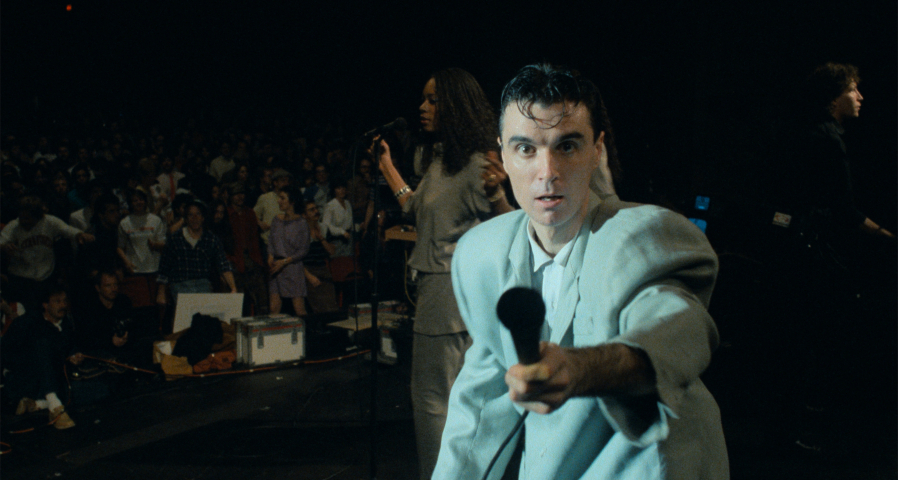Borrelli: Makes sense (laughs). I think “Stop Making Sense” was my first-ever concert film in a theater. Very big deal for me, because I’m from Rhode Island, and the band originated in Providence, so it’s an important local milestone. Also that same year, 1984, “Purple Rain” came out — not a concert film, but Prince is just incredibly vibrant in that film. The film itself, pretty bad, but the concert footage is another level. Also, I just learned that “Stop Making Sense” played the Fine Arts Theater in Chicago for a solid year.
Phillips: What’s the real triumph, do you think, with Demme’s movie?
Borrelli: Hard to say. To some extent, there’s an invisibility to what most directors are doing in a concert film. Seeing it again, I noticed how much Demme captured the way everyone in the band is reacting to everything — how the backup singers react to David Byrne, how (bassist) Tina Weymouth is reacting, all of it. Like the stage concert, the film starts with him alone with a boombox, on “Psycho Killer,” and slowly they add pieces, pieces, pieces, until they have a full show with a full band. The concert just takes off from there.
Phillips: So many right decisions every minute! I think it’s one of the few close-to-perfect movies of its decade. The first time I saw it, I’d only heard the heavy-rotation radio hits of the Talking Heads. So the impact of the music, and Byrne’s sense of optimism and human connection in the face of anxiety just kind of floored me.
Here’s the thing with what Demme and editor Lisa Day created: “Stop Making Sense” is just a glorious display of editing rhythms. It’s a patient approach; they don’t go for the stereotype, that sort of hand-held surface visual energy, or run-and-gun, newsreel-footage-at-Omaha-Beach-style filming. To your point, the movie just pays attention. And they had a frontman, Byrne, who was and is utterly unique. That’s something I picked up on more so this time: There’s an amazing spirit to the music, and the people giving us so much pleasure. But at the center, always, you have a man who’s in many ways alone up there.



